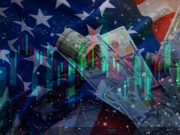For decades, the U.S. dollar has been the undisputed king of global finance — the world’s reserve currency, the standard for oil trades, and the go-to for international deals.
But in 2025, many are starting to ask:
Is the dollar still holding strong, or is it quietly losing power?
Let’s unpack what’s really happening — without fear-mongering, hype, or politics. Just facts, trends, and what it means for you.
First, Why Is the U.S. Dollar So Important?
The dollar has long been:
- The world’s reserve currency (about 58% of global reserves are held in USD)
- The currency of choice for international trade, especially commodities like oil and gold
- A symbol of economic and political stability
It’s basically been the financial version of the global passport — widely accepted and trusted.
But that’s starting to shift.
What’s Changing in 2025?
While the dollar is still dominant, a few major shifts are slowly chipping away at its exclusivity:
1. Rise of Regional Currencies
Countries like China, Russia, Brazil, and even members of the Middle East are conducting more trade in local currencies like the yuan, ruble, and dirham.
- China’s Belt and Road Initiative is settling more deals in Chinese yuan
- BRICS nations are exploring alternatives to the dollar for international trade
- India and UAE recently agreed to trade oil in rupees and dirhams
Translation: Global players want more control and less dependence on U.S. policies or sanctions.
2. Central Bank Digital Currencies (CBDCs)
Over 130 countries are exploring or launching digital versions of their national currencies.
- China’s digital yuan is already in circulation
- Europe is piloting a digital euro
- The U.S. is still in the research phase, but the pressure is on
These could make cross-border payments easier without needing the dollar as an intermediary.
3. U.S. Debt and Inflation Concerns
Let’s face it — the U.S. has a massive national debt, and recent years have seen inflation spike higher than expected. While the economy is resilient, trust in long-term stability is being tested.
- Investors worry about long-term devaluation
- Other countries worry about overexposure to U.S. policies and interest rate hikes
- The Fed’s decisions ripple globally — not everyone likes that
4. The Crypto Wildcard
No, crypto isn’t “replacing” the dollar. But decentralized finance (DeFi), stablecoins, and tokenized assets are offering people new options outside of traditional banking.
- USDC and USDT are still dollar-backed but operate on blockchain rails
- New stablecoins are being pegged to other currencies (euro, yen, yuan)
- Some countries are even exploring Bitcoin-backed economies (hello, El Salvador)
So… Is the Dollar Dying?
Not even close. But it is evolving from “the only show in town” to one of several major players.
Think of it like this:
The U.S. dollar is still the captain of the ship — but now, there are more co-captains joining the bridge.
And that’s not necessarily a bad thing. It reflects a more diversified, multi-polar financial world.
What This Means for You (the Everyday Person)
Here’s how this global shift could show up in your life:
✅ If you’re a traveler:
You may start seeing more multi-currency wallets and apps that don’t default to USD.
✅ If you invest internationally:
Currency diversification becomes more important — look beyond just USD assets.
✅ If you’re in business:
Start thinking globally. Accepting payments in multiple currencies or stablecoins could give you a competitive edge.
✅ If you’re saving:
Keep an eye on interest rates, inflation, and currency policies — they affect your purchasing power over time.
The U.S. dollar isn’t collapsing — it’s sharing the stage. That can feel unsettling, but it’s part of the natural evolution of a more connected and digital global economy.
What matters most is how prepared you are.
- Stay informed
- Diversify your assets
- Embrace new tools (like digital wallets, currency trackers, and fintech apps)
The future of money isn’t about fear — it’s about flexibility.
Want a follow-up post on how to protect your money in a shifting currency world? Just say the word!
4o














